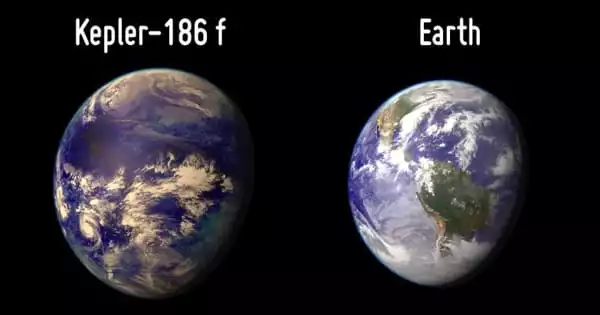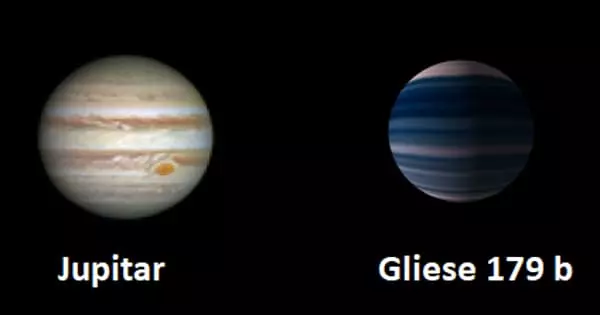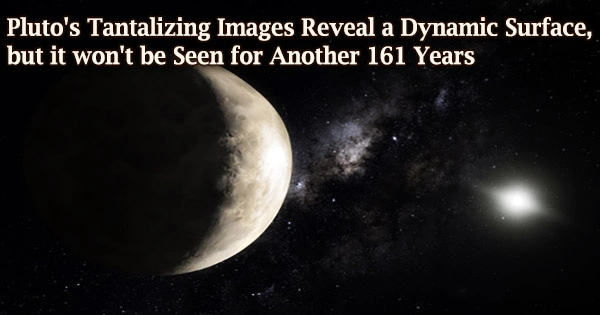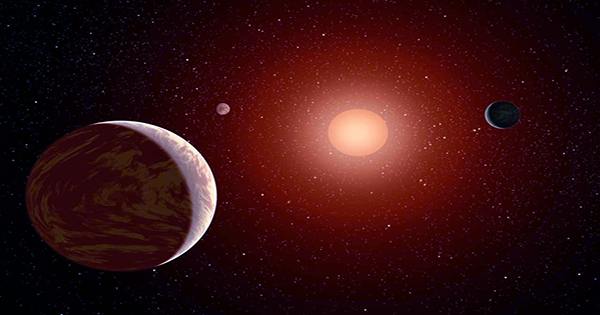Kepler-186f is an exoplanet that orbits the red dwarf Kepler-186 about 500 light-years (178.5 parsecs, or nearly 5.0×1015 km) from Earth. The size of Kepler-186f is known to be less than 10% that of Earth, but its mass, composition, and density are unknown. It is the first planet discovered in another star’s habitable zone with a radius comparable to Earth’s. Kepler-186f orbits its star once every 130 days and receives one-third the energy that Earth does from the sun, putting it on the outskirts of the habitable zone.
The transit method was used by NASA’s Kepler space telescope to detect it, as well as four additional planets orbiting much closer to the star (all modestly larger than Earth). The discovery of Kepler-186f confirms the existence of Earth-size planets in the habitable zones of other stars and brings us one step closer to discovering a world like Earth.
It took three years of data analysis to find its signal. The findings were initially presented at a conference on March 19, 2014, and some details were reported in the media at the time. The public announcement took place on April 17, 2014, and was followed by a publication in Science. The discovery of Kepler-186f confirms the existence of Earth-sized planets in the habitable zones of stars other than our sun.
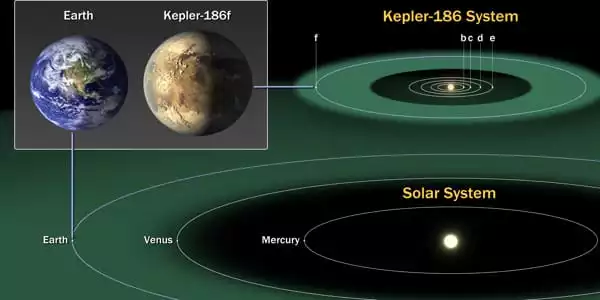
Physical characteristics
Mass, radius, and temperature
The only physical property is directly derivable from that of the central star, which results from the amount of stellar light occulted during a transit. This ratio was determined to be 0.021, resulting in a planetary radius that is 1.11±0.14 times that of Earth. The planet is about 11% larger in radius than Earth (between 4.5 and 26.5 percent smaller), with a volume about 1.37 times that of Earth (between 0.87 and 2.03 times as large).
Combining the radius with densities derived from the various types of matter from which planets can be formed yields a very large range of possible masses. It could be a rocky terrestrial planet or a lower-density ocean planet with a thick atmosphere, for example. In a planet with a radius less than 1.5 R⊕, a massive hydrogen/helium (H/He) atmosphere is thought to be unlikely. Planets with radii greater than 1.5 times that of Earth accumulate thick atmospheres, making them less likely to be habitable.
When red dwarfs are young, they emit a much stronger extreme ultraviolet (XUV) flux than when they are older. During that time, the planet’s primordial atmosphere would have been subjected to intense photoevaporation, which would have largely removed any H/He-rich envelope via hydrodynamic mass loss.
The mass estimates range from 0.32 M⊕ for a pure water/ice composition to 3.77 M⊕ for an iron-only composition (both implausible extremes). A body with a radius of 1.11 R⊕ and a composition similar to that of Earth (i.e., 1/3 iron, 2/3 silicate rock) has a mass of 1.44 M⊕, after accounting for the higher density due to the higher average pressure compared to Earth.
The estimated equilibrium temperature of Kepler-186f, which is the surface temperature without an atmosphere, is around 188 K (-85 °C; -121 °F), which is slightly colder than Mars’ equilibrium temperature.
Host star
The planet revolves around Kepler-186, an M-type star with five known planets. The star has a radius of 0.52 R☉ and a mass of 0.54 M☉. It has a temperature of 3755 K and is approximately 4 billion years old, making it approximately 600 million years younger than the Sun, which is 4.6 billion years old and has a temperature of 5778 K.
The apparent magnitude of the star, or how bright it appears to us from Earth, is 14.62. This is too faint to be seen with the naked eye, which can only see objects with magnitudes of 6.5-7 or lower.
Orbit
Kepler-186f orbits its star with approximately 5% of the Sun’s luminosity, an orbital period of 129.9 days, and an orbital radius approximately 0.40 times that of Earth (compared to 0.39 AU for Mercury). The habitable zone for this system is conservatively estimated to extend over distances receiving between 88 and 25 percent of Earth’s illumination (from 0.23 to 0.46 AU). Kepler-186f receives approximately 32%, placing it within the conservative zone but near the outer edge, similar to Mars’ position in our solar system.
Kepler-186f orbits its star once every 130 days and receives one-third of the energy that Earth receives from the sun, putting it closer to the edge of the habitable zone. The brightness of Kepler-186f’s star at high noon is only as bright as our sun appears to us about an hour before sunset.
